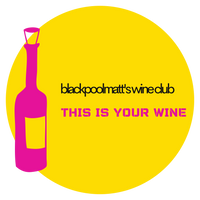barbera
Barbera is the third most planted black grape variety in Italy. It’s internationally known, grown in California since the nineteenth century. It’s produced in a range of styles, from simple and fruity to powerful and complex. Barbera is even used for sparkling wine. It's high acid, low in tannins, and can be high in alcohol. All these characteristics mean that it gets a bit lost: is it a grape variety to be taken seriously or to be dismissed for only making inexpensive wines? what exactly does Barbera taste like? what is its identity?
what is barbera?
In general, wines made from Barbera have ripe, fleshy red fruit and chocolate aromas, high acid, potentially high alcohol, and low, soft tannins. The soft, fruity, high acid style makes the wines ideal for immediate drinking, but wines from south-facing slopes in Piemonte have more structure and can be aged in oak. Barbera is a high-yielding variety which is why it’s so popular with growers, but those yields can lead to lower quality. In buying a bottle of Barbera, you’re never quite sure what you’re getting but there’s some great stuff out there—which I'm here to help you find.
how to find the best barbera
It’s natural to compare Barbera to Nebbiolo because they’re both grown in Piemonte. Any variety is going to suffer in comparison to Nebbiolo, and this becomes particularly acute in Piemonte. The best sites are reserved for Nebbiolo, the lesser sites given to Barbera. These are north-facing, not receiving as much sunshine, which is why the wines can lack body, weight, and complexity.
In contrast, the best wines come from vines planted on south-facing, high-elevation slopes which receive lots of sunlight and the grapes achieve full ripeness for wines with body and concentrated, ripe fruit aromas.
A clue to which are the best wines is in the names. Barbera d’Alba and Barbera d’Asti are the two most-known areas, the fruit grown on south-facing slopes with elevation. There are a couple of other sub-regions to look out for: Monferrato, also in Piemonte, and Oltrepò Pavese in neighboring Lombardia—though these two are less likely to be found outside Italy.

ferdinando principiano
Ferdinando Principiano has been making wine since 1993. After inheriting 7ha of vineyards from his father and grandfather, he now owns 21ha, mostly for Barolo. He has converted farming to organic, and is focused on making wines that express the place they come from. Besides Barolo, he also makes very tasty Barbera d’Alba, which comes from a vineyard at 400m+ elevation and which has the high, fresh acidity characteristic of Barbera but with more of a tannic grip alongside a generous but not overripe fruit profile. Alcohol is 13%, in contrast to a lot of Barbera which can reach 15% or more.
When a producer takes Barbera seriously you find a wine that can be simultaneously fruity, fun, approachable, food-friendly, and serious. That's what's blackpoolmatt's wine club is for: to find wines that are at the highest level of their style.
